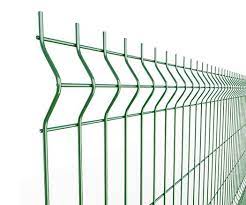
Sculptural Symmetry: 3D Fence Art
In age quick improvement and growing urbanization, the building of fences (ploty) has come about as a crucial factor for strengthening structure with enviromentally friendly dependability. As societies seek to safe property limitations, guard all-natural habitats, and manage land use, the adoption of environmentally friendly fencing practices is now paramount in mitigating ecological effects whilst getting together with social requirements.
Key to the thought of environmentally friendly fencing is the identification that standard strategies can inadvertently harm ecosystems. Typical resources like dealt with timber or galvanized metal, whilst resilient, may possibly leach harmful chemicals in to the earth or waterways, posing dangers to wildlife and human being overall health. Moreover, the indiscriminate placement of fences can fragment habitats, interrupt wild animals corridors, and impede the natural movement of varieties.
To handle these challenges, environmentally friendly fencing emphasizes using eco-helpful supplies and layout strategies that lessen ecological cause harm to. Bamboo, for instance, has became popular as being a renewable replacement for standard timber fencing, bragging quick expansion charges and little ecological footprint. Similarly, reused plastic-type material composites supply longevity with no environmental drawbacks of virgin plastics or aluminum alloys.
In addition, tactical placement and thoughtful design characteristics can improve the environmental functionality of fences. By incorporating wild animals passages, such as culverts or step ladder-like structures, fences can assist in the motion of creatures across fragmented scenery, promoting hereditary connectivity and varieties strength. Furthermore, permeable barriers enable the passage of modest mammals, amphibians, and beneficial pests whilst still maintaining safety targets.
In gardening contexts, sustainable fencing methods line up with guidelines of regenerative territory management. Electronic fencing, for example, permits accommodating rotational grazing solutions that imitate normal grazing designs, marketing garden soil health, biodiversity, and co2 sequestration. Moreover, integrating lifestyle fences comprised of natural shrubs or grasses improves environment connectivity and provides ecosystem solutions for example deterioration control and wild animals environment.
By adopting eco friendly fencing options, facilities jobs can harmonize individual requirements with ecological imperatives, cultivating strong countryside for generations to come. By means of innovation, alliance, as well as a resolve for stewardship, we can easily put together limitations which not only protect property but in addition support the unique tapestry of existence on the planet.